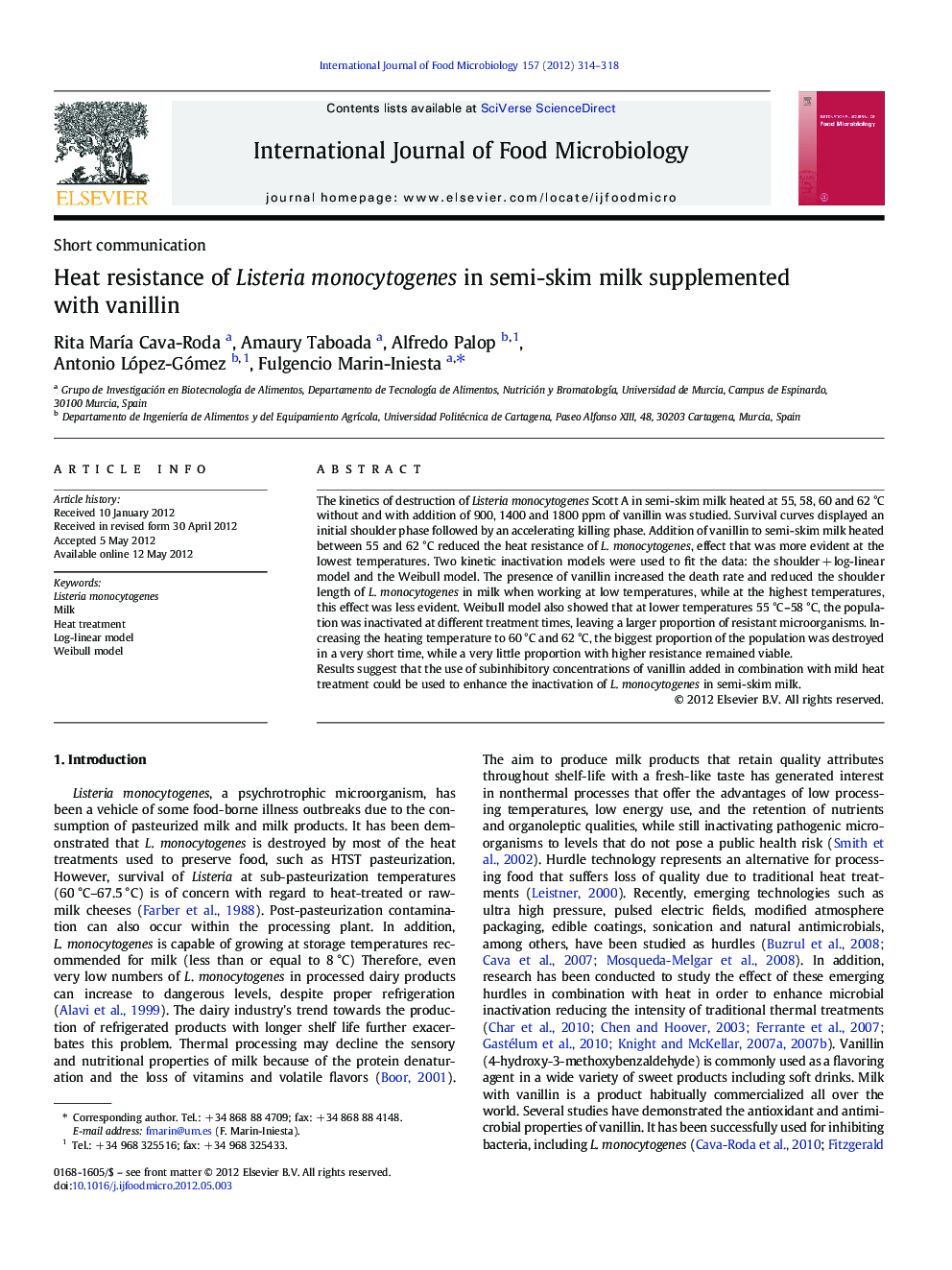| Article ID | Journal | Published Year | Pages | File Type |
|---|---|---|---|---|
| 4367615 | International Journal of Food Microbiology | 2012 | 5 Pages |
The kinetics of destruction of Listeria monocytogenes Scott A in semi-skim milk heated at 55, 58, 60 and 62 °C without and with addition of 900, 1400 and 1800 ppm of vanillin was studied. Survival curves displayed an initial shoulder phase followed by an accelerating killing phase. Addition of vanillin to semi-skim milk heated between 55 and 62 °C reduced the heat resistance of L. monocytogenes, effect that was more evident at the lowest temperatures. Two kinetic inactivation models were used to fit the data: the shoulder + log-linear model and the Weibull model. The presence of vanillin increased the death rate and reduced the shoulder length of L. monocytogenes in milk when working at low temperatures, while at the highest temperatures, this effect was less evident. Weibull model also showed that at lower temperatures 55 °C–58 °C, the population was inactivated at different treatment times, leaving a larger proportion of resistant microorganisms. Increasing the heating temperature to 60 °C and 62 °C, the biggest proportion of the population was destroyed in a very short time, while a very little proportion with higher resistance remained viable.Results suggest that the use of subinhibitory concentrations of vanillin added in combination with mild heat treatment could be used to enhance the inactivation of L. monocytogenes in semi-skim milk.
►Thermal destruction kinetics of Listeria monocytogenes in milk with vanillin. ► Two kinetic inactivation models were used to fit the data. ► Survival curves showed an initial shoulder followed by an accelerating death phase. ► Vanillin enhanced the thermal inactivation effect.
